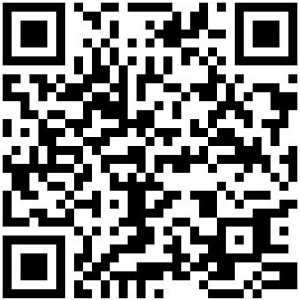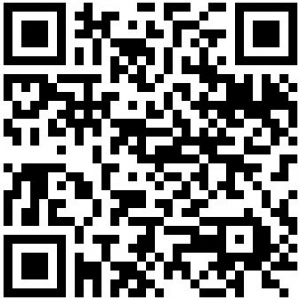One of the many uses of a smartphone is the ability to get the latest news/articles from your favorite websites on the go. No longer must you sit at your computer with your morning coffee to catchup on what you might have missed while you wasted your life sleeping. However, in order to make reading news/articles on your smartphone an enjoyable experience, you need an RSS reading/news aggregating app that will gather all the news from your favorite websites and place it in front of you in one convenient place. So, what are you waiting for? Read on to discover the best RSS reader/news aggregator on Android!
(Note: The main focus of this article news aggregators that read RSS feeder. However, support for other technologies, like Atom feeds, has also been taken into consideration.)
This article is part of our Best Free Android Apps repository. Feel free to drop by when you have time!
Table of Contents
Best Free RSS Reader/News Aggregator
App Name: Pulse News
Developer: Alphonso Labs
Download Size: 1.7 MB
Version Reviewed: v2.0.4
Requires: Android 1.5 and up
Pros
- Supports all (most) types of feeds, including but not limited to RSS, atom, and social feeds.
- Social feeds including Facebook (personal Facebook feeds), Digg top stories, Reddit top stories, Youtube top videos, and more.
- Users can use pre-configured sources/feeds, or add their own.
- Has the ability to import feeds from Google Reader accounts and sync read status.
- Users can share news/articles via Facebook, Twitter, e-mail, or SMS.
- Supports widgets.
- Allows users to control how and when sources/feeds are updated: Manually or automatically every X hours.
- Has an option where feeds will only be automatically updated when connected to WiFi.
- Allows for offline viewing. (However, feeds must first be downloaded while connected to the Internet… duh.)
- Supports app2sd.
- Ads-free.
Cons
- Users are limited to 12 sources/feed per content page, with a maximum of 72 sources/feeds allowed in total.
- Comes with “junk” feeds, forcing users to remove them manually.
- Needs better controls over how feeds are refreshed, downloaded, and cached locally.
Discussion
Pulse News is one of the best news aggregators available on Android. Not only does it support the customary RSS and Atom feeds, but it also provides easy access to social feeds such as your Facebook wall feed (you must login to Facebook), your Facebook status update feed (you must login to Facebook), your Facebook links feed (you must login to Facebook), Digg top stories, Flickr top photos, Reddit top stories, and Youtube top videos, and has the ability to import feeds from your Google Reader account.
Pulse News comes pre-configured with many sources/feeds which users can pick from (such as the already mentioned social feeds); and it allows users to add their own custom sources. In total users are allowed to have 72 concurrent sources/feeds. (You can modify – add/remove – feeds as you please.) Pulse will automatically update feeds (every X hours, depending on what you select from settings; it is set at 6 hours by default) but users has the ability to manually refresh them. (Automatic update can be turned off, and it can be set to only automatically update when connected to WiFi.)
Without a doubt one of the most attractive aspects of Pulse is its interface. The interface is beautiful, with well designed graphics, smooth transitions, and touch gestures support. The main part of Pulse’s interface are the “content pages”. Pulse has six content pages: Home, Page1, Page2, Page3, Page4, and Page5. (Pages can be renamed.) These pages are where the feeds go. Each content page is fully customizable, allowing users to place whatever sources/feeds they want. However, users are limited to 12 sources/feed per page (hence the total 72 limitation).
For those users that don’t want to continually access Pulse’s main app to view news, Pulse has widget support allowing users to place feeds directly on their home screen. There is a “large” widget which takes up 8 icon spots (4×2). This widget shows one feed (three stories at a time; users can scroll through it) with a short description of the selected story underneath the feed. Clicking on the short description opens the story in Pulse. Then there is a “small” widget which takes up 4 icon spots (4×1). It also shows one feed (three stories at a time; users can scroll through it) but does not have a short description of the selected story underneath the feed. Clicking on the story name/icon opens the story in Pulse. The “large” widget has a refresh button to manually refresh the feed whereas the “small” widget does not.
All in all, Pulse is a brilliant news aggregator app. However, there are two major issues I have with Pulse.
Firstly, I want there to be better control over how feeds are refreshed, downloaded, and cached. Currently, you can either manually refresh all feeds or automatically refresh all feeds. I want there to be an option to automatically refresh only specific feeds, as opposed to all or nothing. (Users may have many feeds, but may only regularly read a few so it is a waste to refresh them all, all the time.) Furthermore, there is the ability to only automatically refresh feeds when connected to WiFi, but it would be better if there were options that allowed feeds to be automatically refreshed over network connection but not images or not the full content. In other words, it would be useful to be able to still get article titles when on network data without having to download all feed content. Lastly, currently all feeds are downloaded and cached for offline viewing. There are no options to only select a few feeds (i.e. just like mentioned previously, a user may only want to offline view a select number of feeds as opposed to all their feeds) or totally turn off caching, there are no options to control how many articles are cached, there are no options on what to cache (text only, with images, etc.) nor are there any options to control for how long they are cached.
Secondly, I dislike how Pulse limits users to 12 feeds per content page and 72 feeds overall. It is foreseeable that users may have more than 12 sources for a category (i.e. if I have an “Android” page, I could have more than 12 Android feeds) and it is just annoying to have to flow feeds to other pages because the maximum limit is 12 per page. Similarly, 72 is no small number and many people will be satisfied with having 72 or less sources, but others will find this limitation to be a deal-breaker.
Runner Up
App Name: gReader
Developer: noinnion
Download Size: 698 KB
Version Reviewed: v2.1.7
Requires: Android 1.5 and up (Does not work with Android 3.0+)
Discussion
gReader is more of a “Google Reader reader” than an “RSS reader”. In of itself gReader does not allow users to add any sort of feeds. Rather, gReader connects with Google Reader accounts, syncing all subscriptions/feeds. (You can add feeds with gReader once you are logged into your Google Reader account.)
Like Pulse News, gReader has the ability to automatically refresh feeds and it also allows users to manually refresh. Also like Pulse News, users can set it so feeds are only refreshed while on WiFi. Unlike Pulse News, however, gReader provides users with more extensive customization options in regards to downloading and caching feeds: Users can turn off downloading and caching (it is actually turned off by default), turn it on, or set it to only happen when connected to WiFi; users can control how to store offline content, such as text only or text and images. (There are other customization options available in gReader, aside from the already mentioned.)
By and large, gReader’s interface is nothing too fancy; it doesn’t add to gReader’s appeal like Pulse News’ interface does but it doesn’t really take away either. One thing I did like about the interface is that when viewing full articles, the full articles open in gReader (as opposed to opening in the default Internet browser), making it easy to navigate back to the feed when needed; and there is a “mobilizer” feature (represented by an R in the bottom toolbar) that turns the page into “mobile form” if it doesn’t have/doesn’t show the mobile version of the website.
Unlike Pulse News, which has no paid version (yet), gReader has a free and paid version. This means that the free version has some shortcomings. The free version of gReader has ads, only supports one simple icon widget (not the type of widget that shows the feed but rather just a shortcut to access the feed in gReader; it does show the number of unread articles, though), and users cannot download podcasts. Furthermore, while this has no relevance with free vs pro, I find it annoying that gReader only works with Google Reader accounts. I don’t see why gReader cannot allow users to add their own custom feeds without having to use a Google Reader account. Then again, if the developer did that they would have to change the app name and we can’t have that now can we.
Honorable Mention
App Name: Google Reader
Developer: Google Inc.
Download Size: 1.0 MB
Version Reviewed: v0.9.3
Requires: Android 1.6 and up
Discussion
Google Reader is the official Google Reader app for Android. It syncs with Google Reader accounts, allowing users to view/edit their subscriptions (aka feeds). There aren’t too many customization options with Google Reader as there are with Pulse News or gReader. You have the options to show videos (and other “plug-in content”) in-line, navigate between articles using the volume key, synchronize feeds every one hour for offline access, and use https to retrieve feeds.
Google Reader does support widgets, but it lacks the Pulse-liked widgets. Rather, it has one widget which is the same as the one discussed above for gReader, while the other is a “news ticker” which shows one feed article at a time, automatically going through the whole feed.
The official Google Reader app is just the basics when it comes to news aggregation; to some, this basics may be a curse while to others it will be a blessing.

 Email article
Email article



